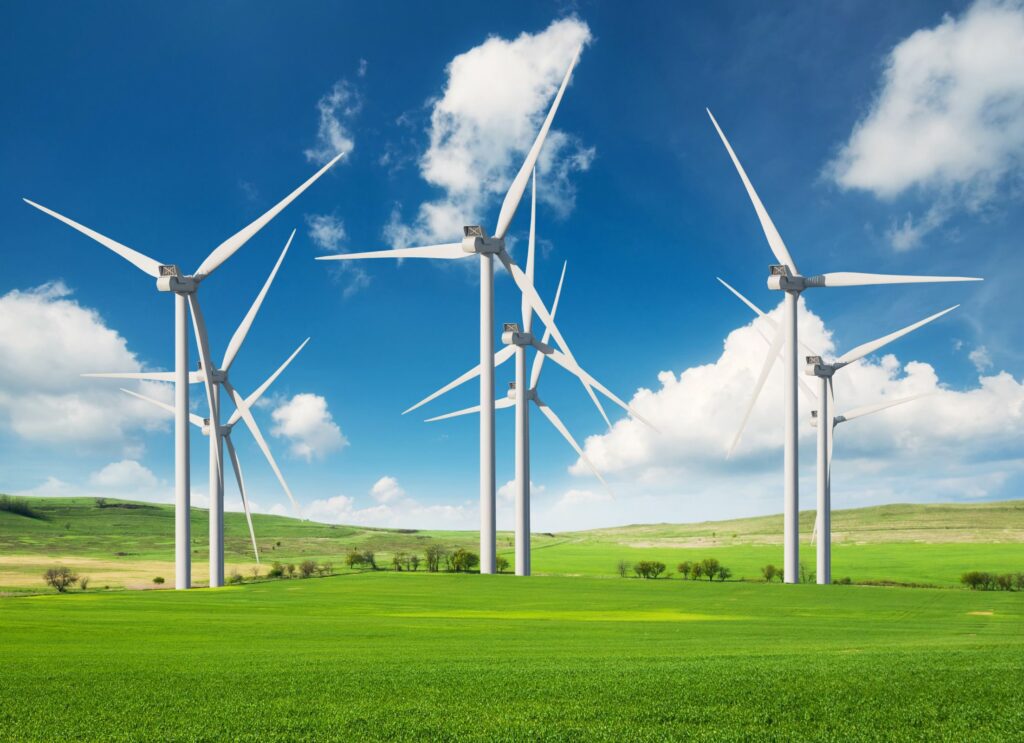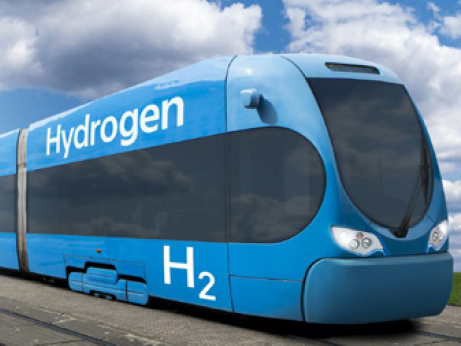A variety of industries has been actively trying to find a way to more environmentally friendly and sustainable solutions and to reduce the carbon footprint. Because of their properties, epoxy resins are not visible at first glance but play an irreplaceable role in certain important applications and industries. Even in small quantities, epoxies have a significant positive effect on the sustainability of large and expensive structures and projects.
Over the past 10 years, epoxy resins have greatly enhanced the sustainability of other industries in growing sectors such as electronics, automotive, protective coatings, adhesives and civil engineering¹. Here are some examples how epoxy resins enable functioning of some of these sectors:

CLEAN ENERGY
The energy sector is responsible for more than 75% of the EU’s greenhouse gas emissions and increasing the share of renewable energy across the different sectors of the economy is therefore a key building block to reach the EU’s energy and climate objectives². Epoxies are necessary material input for many energy applications. Epoxies help make clean energy sources more affordable, durable and resilient. It is not only about securing clean energy supply but also about the need to protect the environment from the exploitation of exhaustible energy resources such as coal or gas. They also enable engineers to build larger and lighter equipment, such as windmill blades, to produce energy more efficiently and modern airplanes that fly with more than 20% better fuel efficiency³.
Wind energy
The wind energy sector has quickly emerged as one of the largest sources of renewable energy around the world. In line with the EU’s efforts to ensure more renewable energy sources, offshore and onshore windparks in the EU continue to grow.
Epoxy resin has been a key component of wind turbine blades for decades. Epoxy thermosets are used for making the blades larger and more durable thanks to their high tensile strength and high creep resistance. Epoxy resins are not only a standard composite component of large-sized windmill rotor blades but are also used in electrical components and smart grids as a turbine insulator or as a protective coating of the wind mill towers and other concrete and steel parts. Excellent anticorrosion properties of epoxy resins protect structures of wind turbine poles in the North Sea from saltwater corrosion. Epoxy resins also play an irreplaceable role as a repair material. As turbines age, new repair epoxy systems allow the extension of the lifetime of the blades.
Solar energy
The harnessing of solar energy dates back to ancient history. Today, solar power is another widely used renewable energy source. Epoxy resins used for sealing and mounting protect solar panels against weathering (temperatures, pouring rain, hail, storms, and turbulent winds) and extend the lifetime of the products. Epoxies are cheap, easy to use and easy to repair.
Hydropower
The third important source of renewable and clean energy is hydropower. The hydropower industry needs a solution for protecting the hydropower concrete surfaces against low temperatures and lashing water flow. This solution is again…epoxy resins. Epoxy mortar (a mixture of epoxy resins, additives and fillers) has proven to be one of the most effective materials used for surface protection. In addition to the epoxy mortars, epoxy protective coatings and epoxy repairing systems are widely used in the hydropower industry owing to their properties like non-permeability, adhesive strength, anti-erosive nature and non-abrasiveness.

HYDROGEN
Hydrogen is a clean, low- or no-carbon fuel that, when consumed, produces only water. Hydrogen fuel supports the energy transition and helps the net-zero ambitions. For the storage of hydrogen, epoxy composites are the material of choice – epoxy resins are used for production of lightweight, very strong high-pressure hydrogen tank.
ELECTRICAL AND ELECTRONIC COMPONENTS
The EU´s Green Deal means massive adjustments of the electrical distribution system of Europe as energy demand for heating and mobility shifts away from fossil fuels. This very traditional market segment for epoxies is becoming very dynamic at this time!
The entire grid needs to be upgraded from the main high voltage arteries to the fine-mazed network reaching all electricity users. At each level of the grid, epoxy resins play an important role thanks to their insulating properties combined with their strength, anticorrosive protection and adhesion. Epoxy resins are used both as a composite material, adhesive, potting material and as a coating in the production, transformation and distribution of various types of renewable and non-renewable energy. Traditionally, printed circuit boards in electronics and specific types of insulators are produced from epoxy resins.

MOBILITY
Lightweighting
Traditionally, our cars, trucks, trains and planes were made of metal with epoxy-based protective coatings providing corrosion protection (including e-coating). The need for more sustainable mobility has provided additional opportunities for the use of epoxy resins in lightweight composites (tailgates, hoods, roofs etc.).
Epoxy resins as a part of composites help to accelerate the shift to sustainable and smart mobility. Vehicles are lighter while maintaining strength, longevity, reliability and safety at the same time. In general, the lighter the car, the lower the fuel consumption and the higher the energy-efficiency. This is very important especially for electric vehicles (EVs). For trucks, lightweighting allows to deliver more goods per the same total weight of the vehicle. The use of epoxy resins ensures that the European vehicle manufacturing industry remains competitive and produces affordable cars (4).
In planes, epoxy use has been growing for many years. Use of composite components improves the durability, efficiency, strength and reliability. Now, new opportunities arise with new needs – drones and unmanned aerial vehicle. Due to the overall weight saving in Airbus A350-900s in operation with EU airlines thanks to the overall weight saving attributable to epoxy resins (as compared to aluminium), less fuel is used, which is equitable to saving some 14 million tonnes of CO2 aircraft emissions in 2019 (5).
Electrical components of vehicles
Besides lightweighting, epoxy resins play a key role in electrical powertrains for vehicles and as an encapsulation material in under-the-hood electrical components. Epoxy resins can provide heat resistance and fire protection for battery components both in conventional vehicles and in EVs.
Finally, epoxy composites are the material of choice for hydrogen tanks that may be used also in transportation.

CONSTRUCTION
The construction industry has benefited from the properties of epoxy resins for a long time. In this industry, epoxy resins are a synonym for longevity, high performance and durability. Epoxy resins help building and renovating in an energy and resource efficient way. A lower number of applications and maintenance cycles reduces the costs and, more importantly, the amount of the resource used as well as the greenhouse gas emissions.
Using epoxy resins in flooring and anticorrosive metal coatings results in significantly lower maintenance costs. Epoxy adhesives and sealants enable user-friendly, low-cost and fast fixing and repairing of various materials. Epoxy resins also offer special applications due to their heat resistance and electrical properties (anti-static flooring, industrial flooring).
Mgr. Kamila Vítek Derynková, Product Marketing Manager
¹ Epoxy Europe: Sustainability, Sustainability – Epoxy Europe (epoxy-europe.eu)
² European Commission: Reewable Energy, https://energy.ec.europa.eu/topics/renewable-energy/renewable-energy-directive-targets-and-rules/renewable-energy-targets_en
³ Epoxy Resins: Silent Enablers of a Sustainable Economy. Market Overview and Socio-Economic Analysis of the European Epoxy Resin Industry, 2010; Epoxy Europe: European Industry: Socio-economic value of epoxy resins, European Industry: Socio-economic value of epoxy resins – Epoxy Europe (epoxy-europe.eu)
(4) Epoxy Europe: European Industry: Socio-economic value of epoxy resins, European Industry: Socio-economic value of epoxy resins – Epoxy Europe (epoxy-europe.eu)
(5) Epoxy Europe: European Industry: Socio-economic value of epoxy resins, European Industry: Socio-economic value of epoxy resins – Epoxy Europe (epoxy-europe.eu)